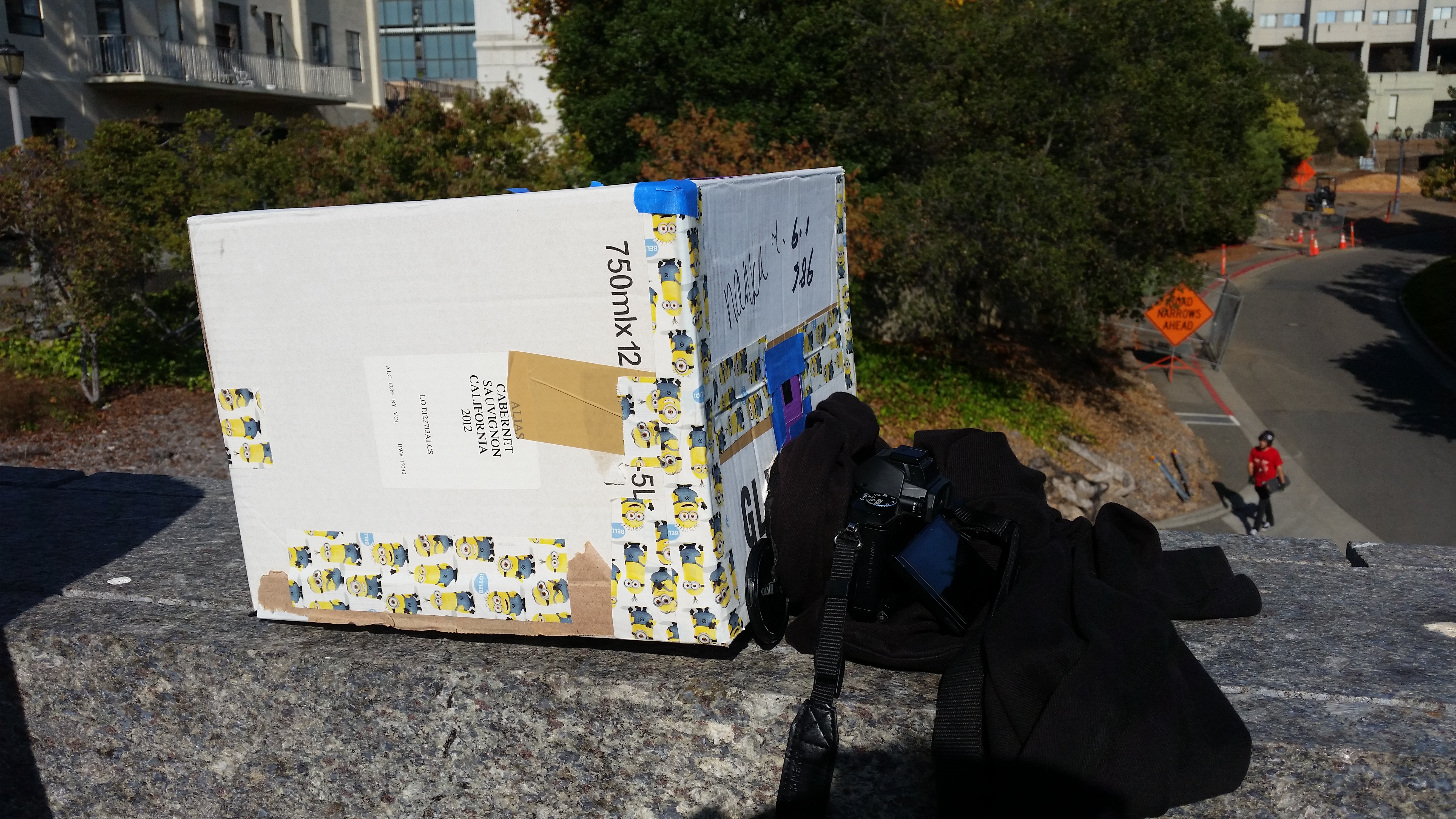
CS 194-26: Image Manipulation and Computational Photography
Casey Takahashi (cs194-26-add) and Kelsey Lam (cs194-26-abi)
To design our camera obscura, we found a sizeable box so that we'd be able to capture a large enough picture, and have the lens far enough away from the end of the box so it can catch everything. We lined all inner sides with black felt, except for the back of the box, which was lined with white printer paper. We cut a hole for the camera lens, and right above the lens, we cut a hole and created a pocket to slip the different pinhole sized cards in. To determine the pinhole size, we initially tried calculating the best sizes using the equation:
1.9*sqrt(f*lambda)
f = 30cm = 300mm
lambda = 550nm = 0.00055mm
1.9*sqrt(300*0.00055) = 0.77178364844mm
We calculated the best sized pinhole would probably be around 0.8mm, so we made one smaller (0.1mm) and one larger (2mm). However, once we actually started shooting photos, there wasn't enough light coming in, and we couldn't increase the shutter speed past 60seconds, so we increased the size of our pinholes. We settled on 0.8mm, 3mm, and 5mm.

Pinhole Camera Model |
When we use smaller pinholes, the images are darker but sharper because less noisy rays go through. When we use larger pinholes, the images are brighter but more blurry because there are more rays of light going through. We found that our 3mm pinhole worked the best, because it yielded pictures with sufficient light, unlike the 0.8mm pinhole, but also pictures that were slightly sharper than the 5mm pinhole.
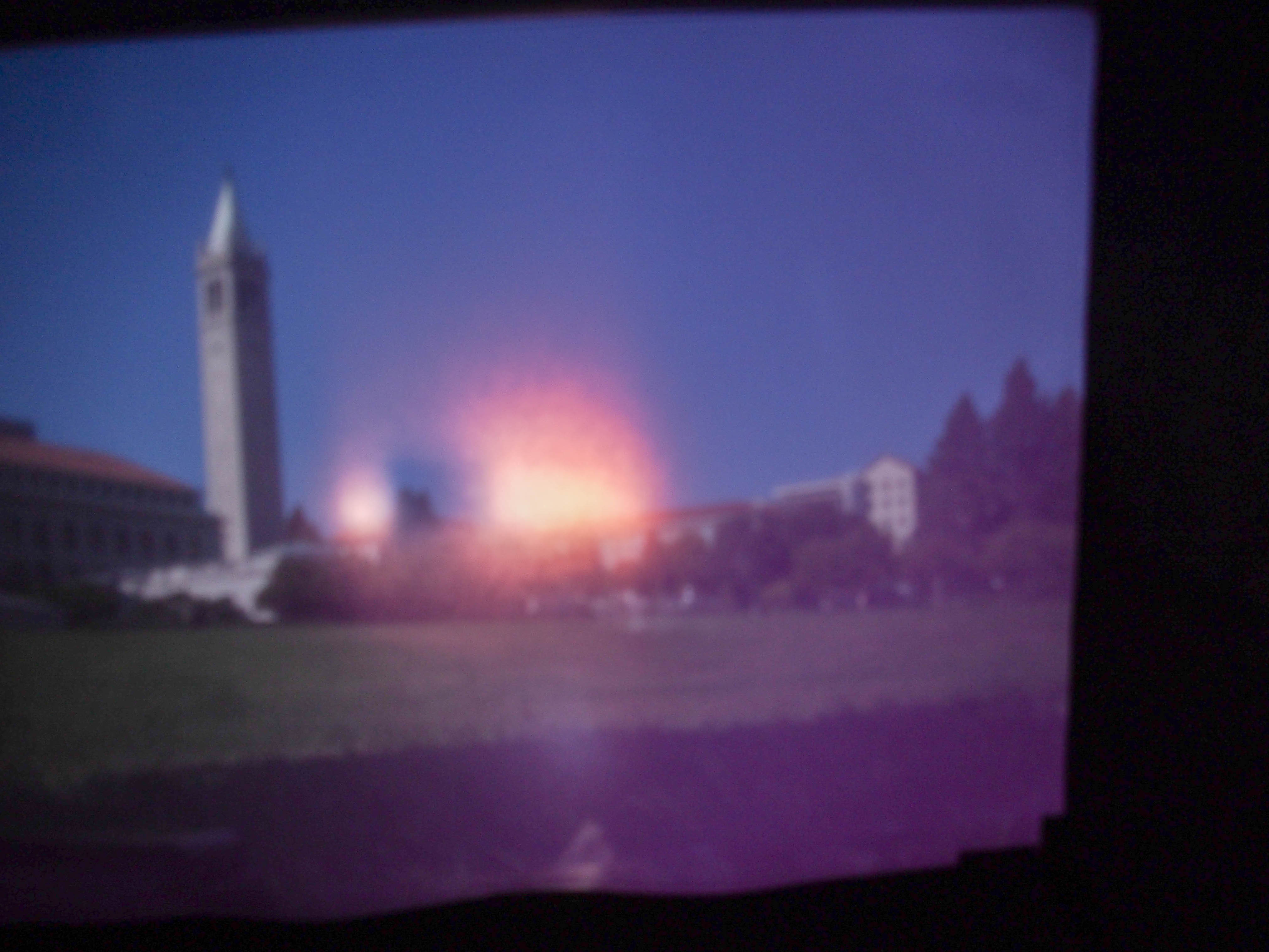
Campanile: 0.8mm, 60s |
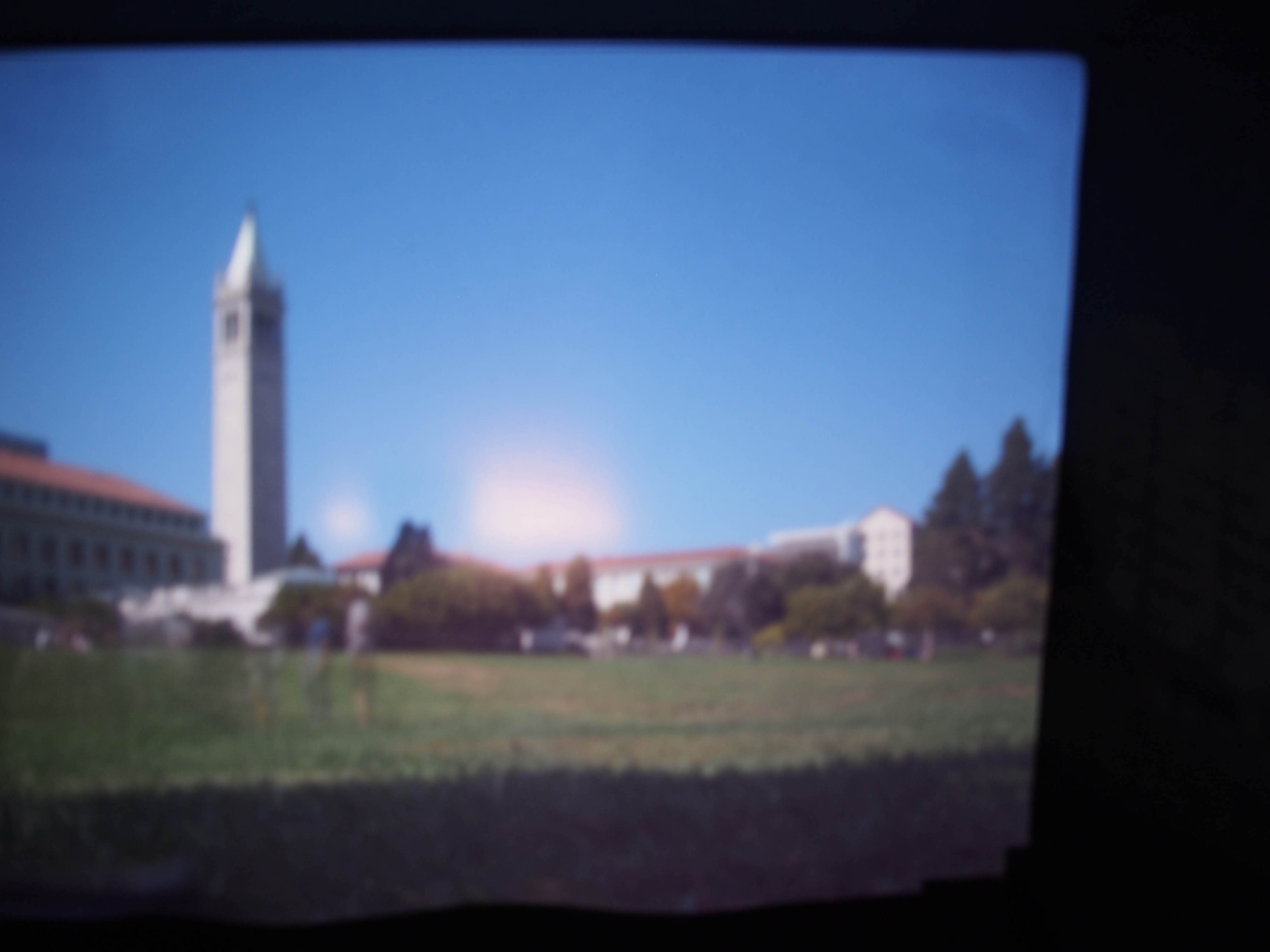
Campanile: 3mm, 50s |
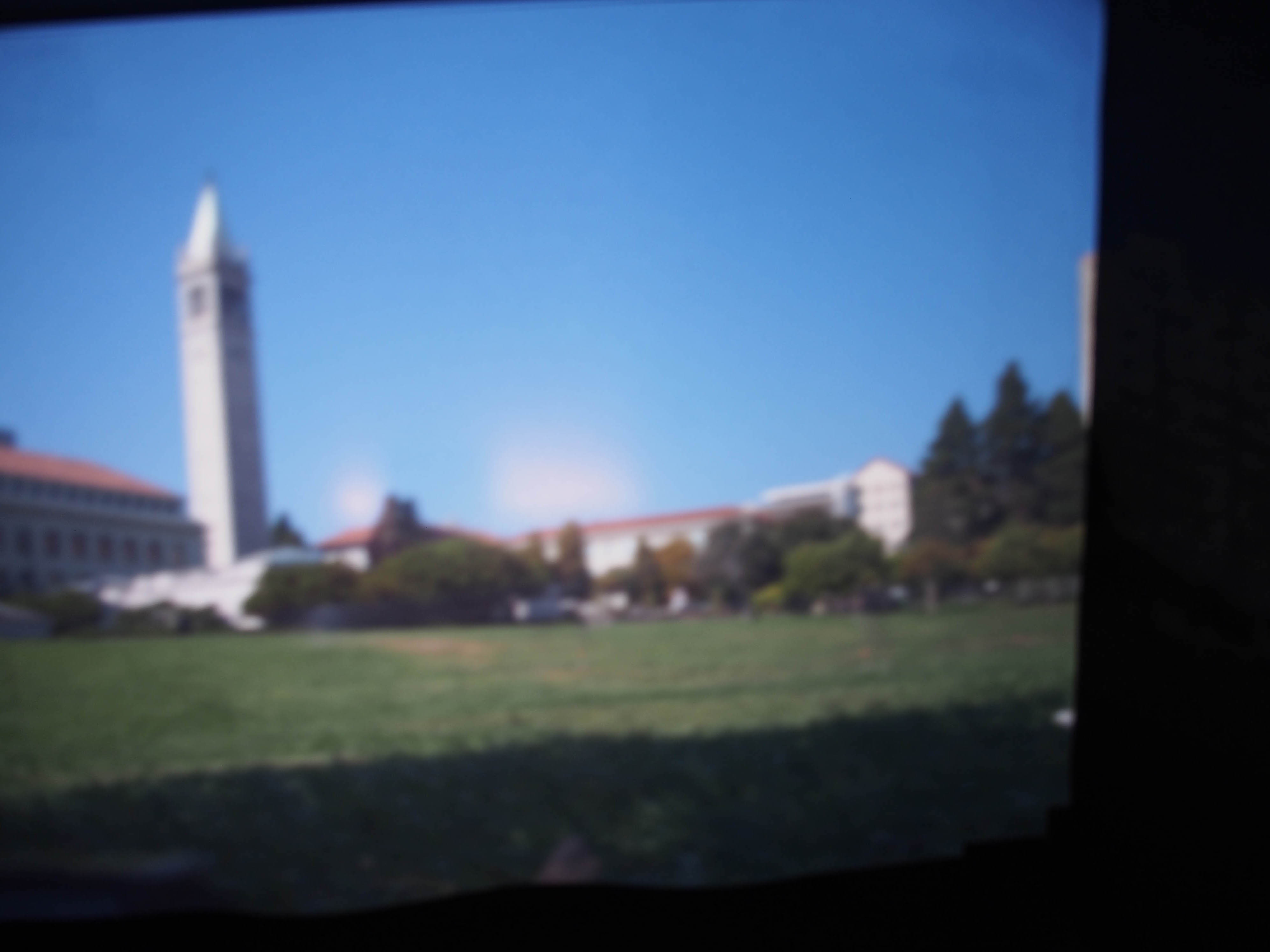
Campanile: 5mm, 30s |
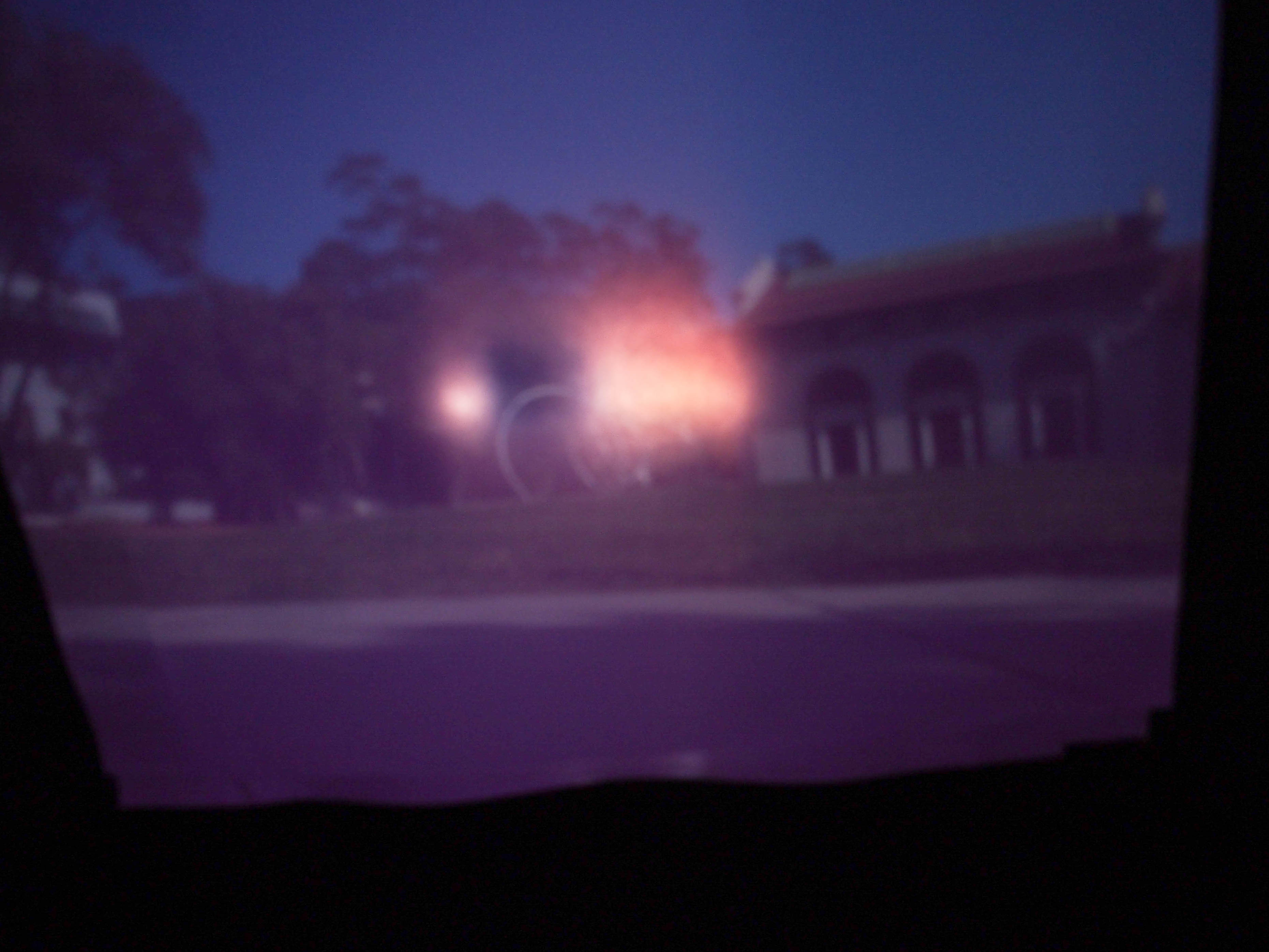
Hearst: 0.8mm, 60s |
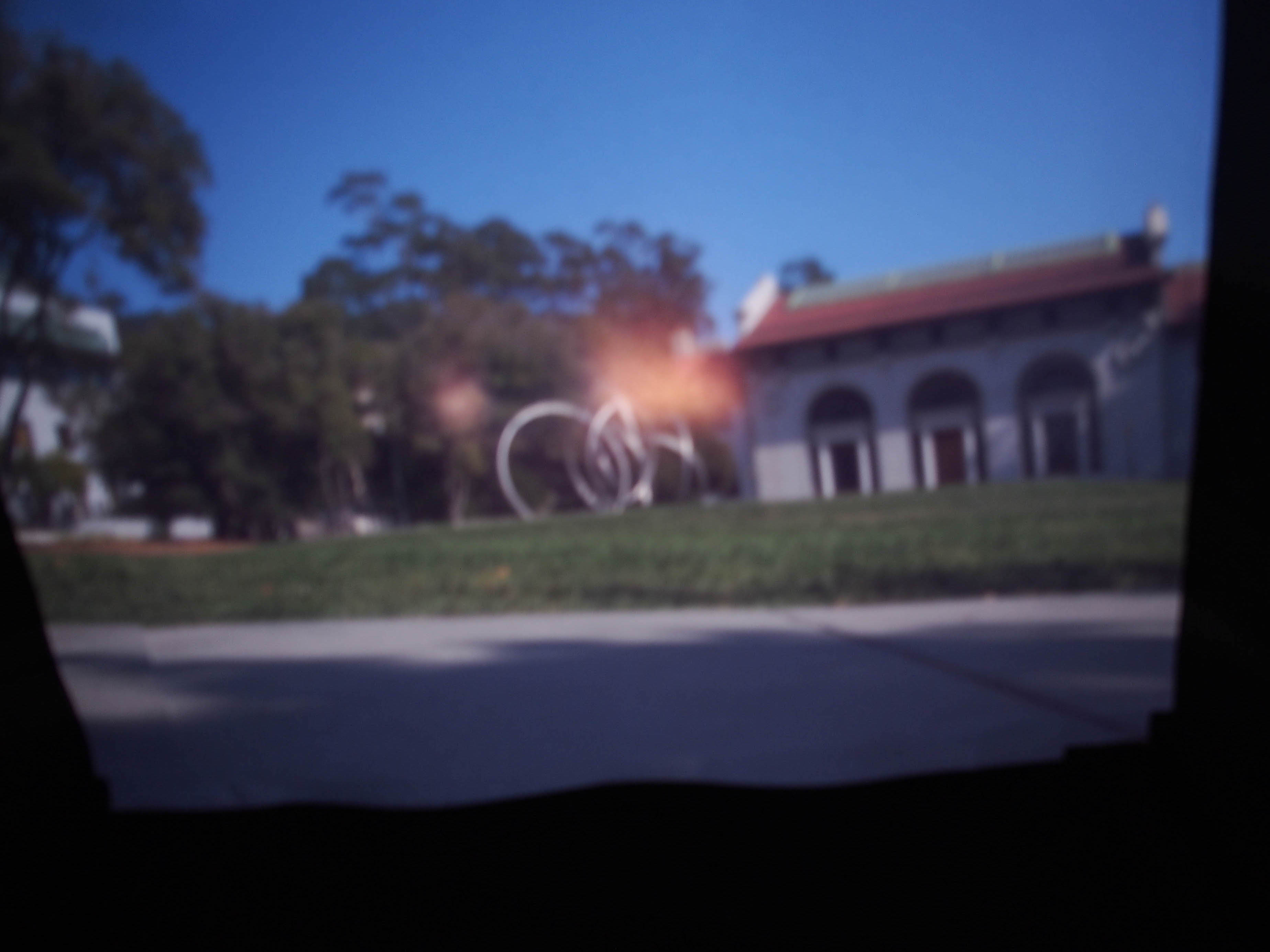
Hearst: 3mm, 50s |
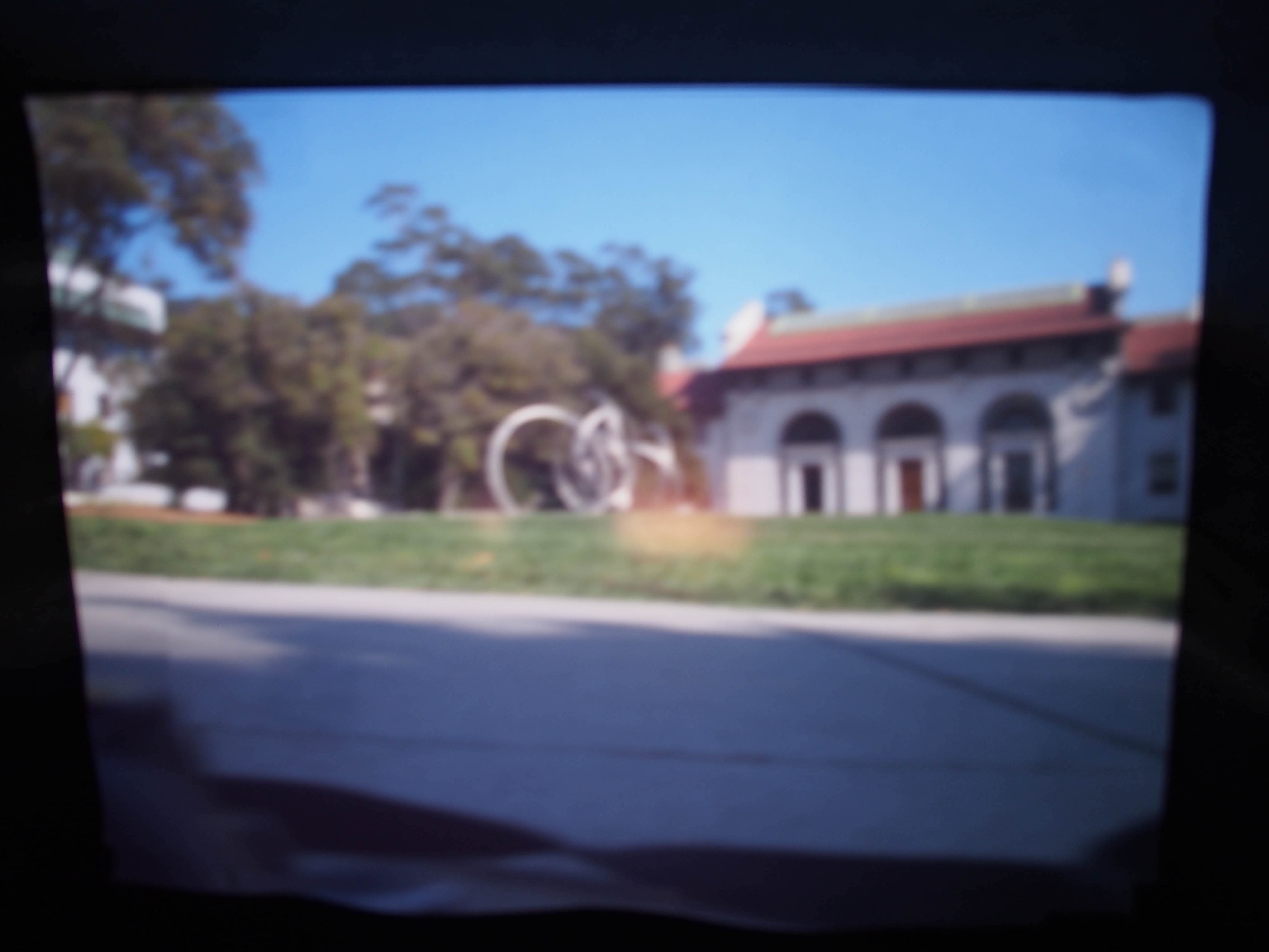
Hearst: 5mm, 40s |
We noticed that there was a bright spot in the center of our pictures later, due to a small crack between the flap of the box under white tape, so a little bit of light leaked through. This fault was more apparent in our 0.8mm pinhole, since less light was coming from the pinhole and more light was coming from the crack.
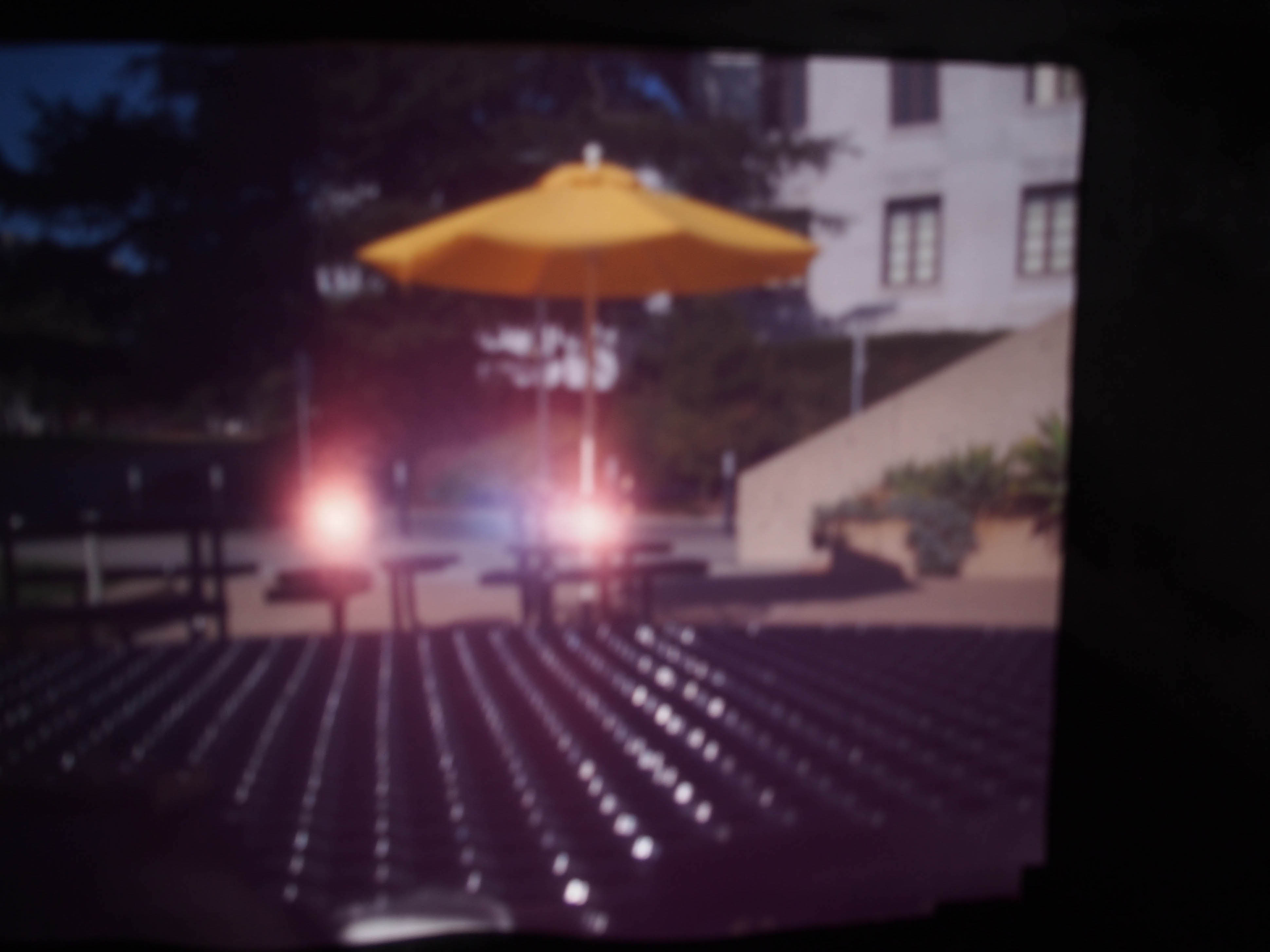
Umbrella: 3mm, 50s |
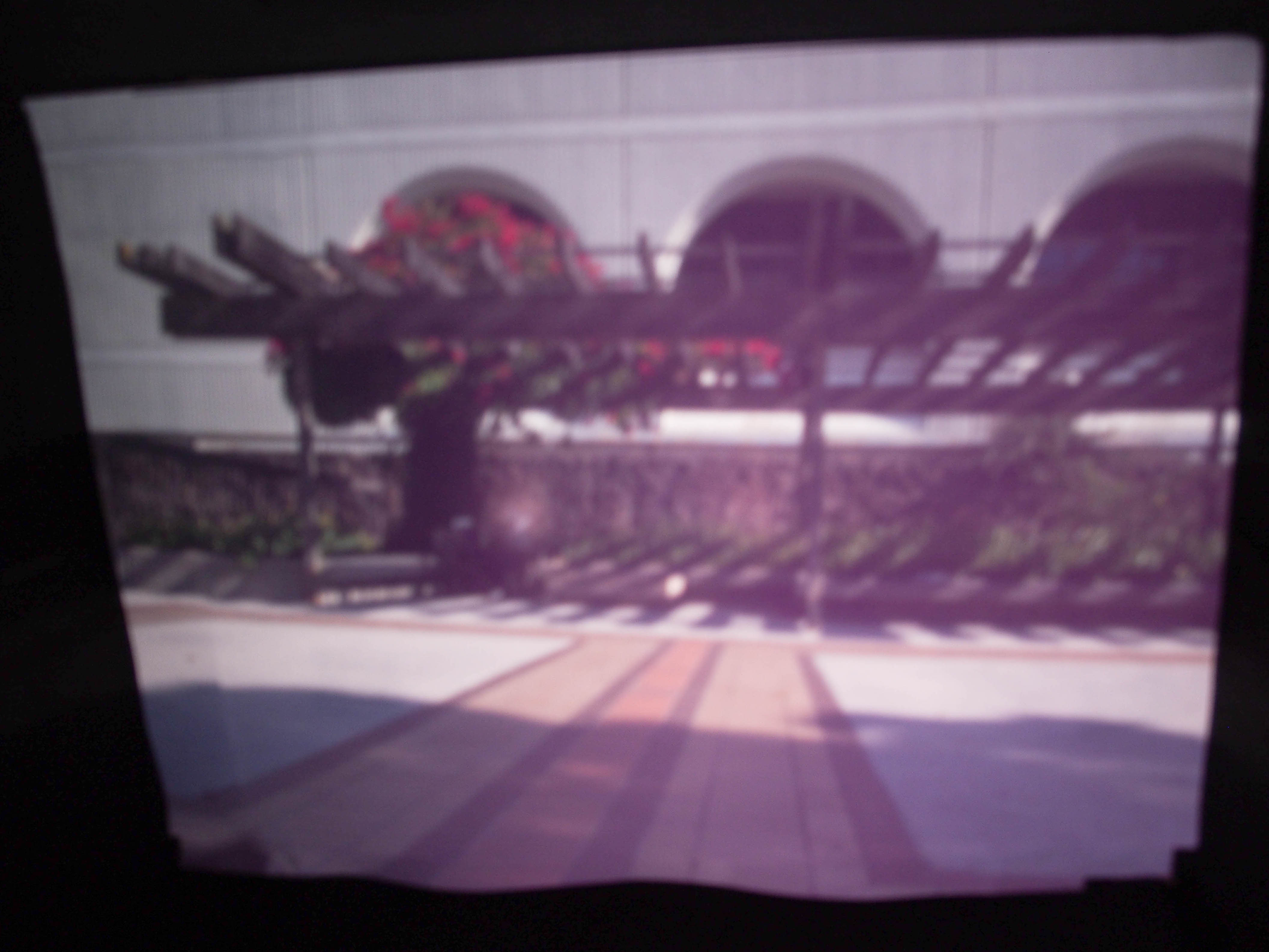
Tree: 3mm, 60s |
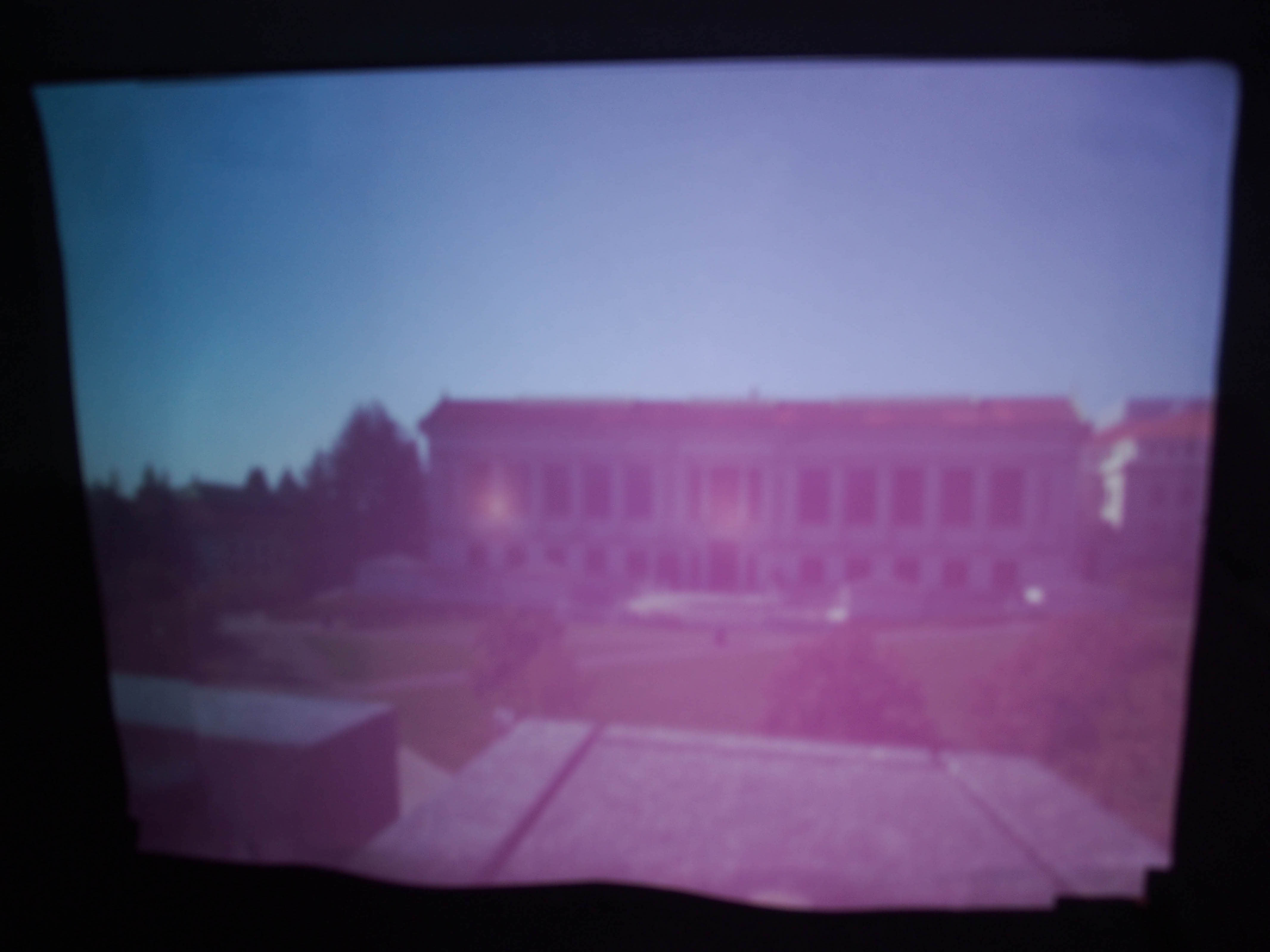
Doe: 3mm, 50s |
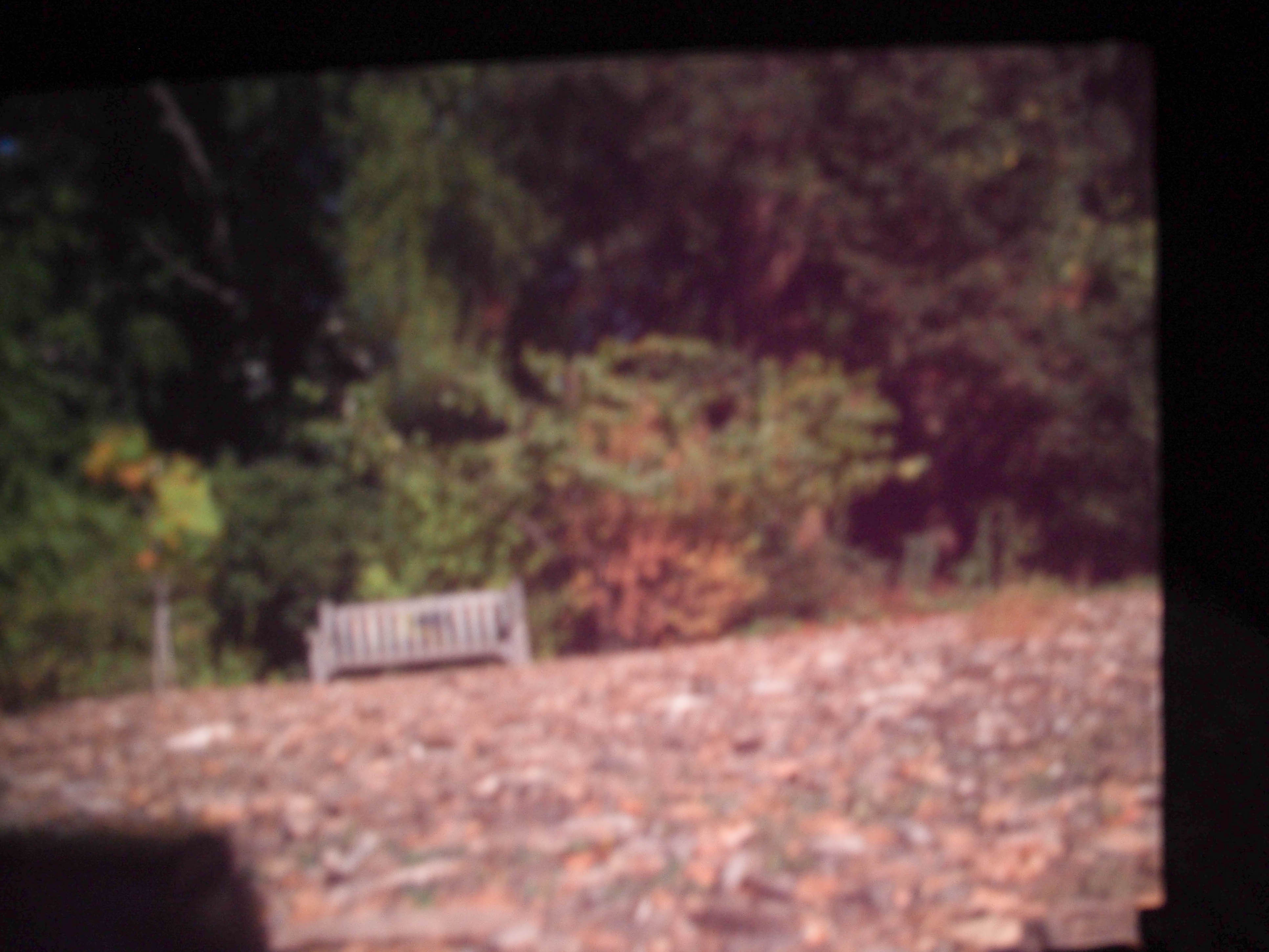
Bench: 3mm, 60s |